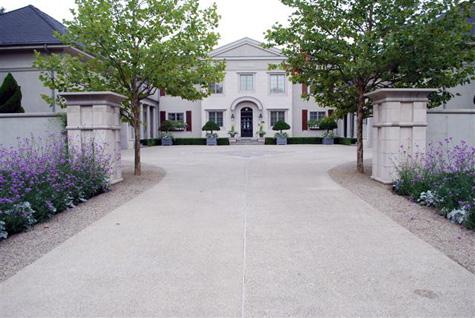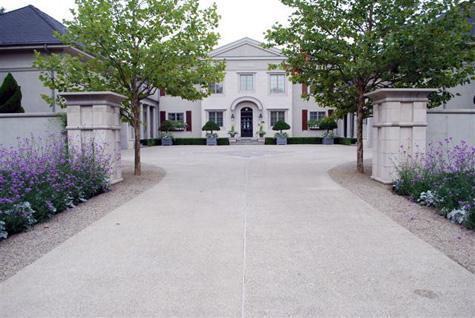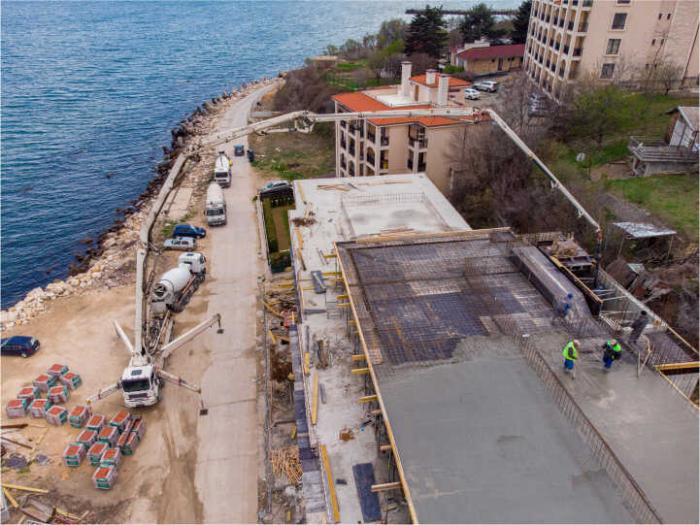
The driveway can be an unnoticed constructive element but in most cases it’s what people see first. A driveway seems to be the finest when the utility between the pattern of the construction and the surrounding landscapes resemble each other.
There are multiple choices for what you want your driveway surface to be including:
- Decomposed Granite
- Two Coat Gravel Driveways
- Concrete Driveways
- Hot Mix Asphalt Driveway
Below is a guide to both the benefits and drawbacks of using each of these materials.
1. Decomposed Granite Driveways

Prepare the space for laying the Decomposed Granite before laying a landscaping fabric and mounting landscaping edging around the perimeter. Next, the Decomposed Granite is placed and flattened. At this point, the driveway is all set to be used.
Benefits
- Laying it increases the aesthetic of the construction.
- Easy in flattening the driveway.
- A budget-friendly option for a driveway.
Drawbacks
- Decomposed Granite driveways are difficult to maintain when completely dry.
- When DG is wet, it has the tendency to stick to feet.
2. Two Coat Gravel Driveways

The process starts by preparing a base first, before spreading a layer of Bitumen for sturdy effects. Once the layer is set, add one thin coat of coloured stones then spray another layer of Bitumen to produce a sand paper effect. Lastly, cover with a top layer of coloured stones If you need to immediately walk and drive on the surface, add final finishing to the two coated gravel.
Benefits
- If appearance is essential, selecting the right coloured gravel to match the construction is a good idea.
Drawbacks
- If thinking of constructing it on a steep incline, think twice! Two coat gravel driveways are saggy on the surface and can wash downhill easily.
- A hoe is always needed to remove the heap of leaves and for levelling the surface.
3. Concrete Driveways

Summarised process of laying Concrete Driveway:
- Measure the area and order the materials.
- Access the tools needed to carry the concrete driveway.
- Set up the ground for laying the concrete.
- Cut and lay the formwork essential for the structure.
- Pour the concrete in the set framework.
- Then flatten the concrete poured.
- Finishing the concrete surface.
- Level the concrete. Important tip – it has the tendency of strengthening quickly when mixed with water.
- Lastly, remove the framework for utilising the constructed concrete driveway.
Guide: how to build a concrete driveway
Benefits
- Concrete driveways last for 20 years.
- Easy to clean and maintain.
Drawbacks
- Extra expenditure is needed to re-colour the faded concrete surface after a while.
- More expensive compared to hot mix asphalt driveways.
- The re-coating of a concrete driveway is not possible.
- If not maintained on a regular base, concrete can end up with permanent stains and spots.
4. Hot Mix Asphalt Driveways

Hot mix asphalt is a mixture of Bitumen – a combination of sand, gravel, and by-product of petroleum. It is also called Bitumen and Asphaltic Concrete. Generally, it is prepared at a very hot temperature of 170°C and laid on the road in hot form so that it can turn solid at air temperature and driven on immediately.
Benefits
- Affordable compared to other driveways.
- Inexpensive re-coating process and highly durable.
- An Asphalt driveway is easy to lay and offers immediate access to walk and drive on.
- Effortless to patch the repair. For example, if a plumber puts a trench across the driveway it can easily be patched up.
Drawbacks
- The base stays soft in the initial months so you need to avoid sharp turns by cars as this could dislocate the the laying.
- It has a tendency to absorb petrol so avoid filling lawn mowers on it.


